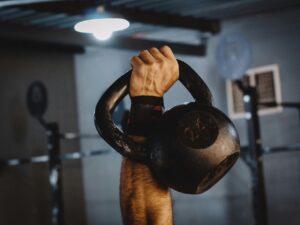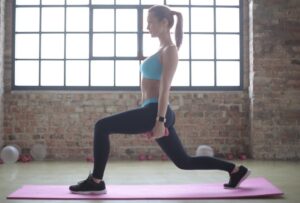Having a workout routine is beneficial on many fronts. It delivers numerous health benefits, develops your fitness, and makes you feel better.
Unfortunately, finding the time to maintain a workout program can be challenging, especially for people working full-time and raising kids. In such scenarios, time management becomes a crucial factor for success.
The question is, what is the optimal workout length? More importantly, what are some ways to determine how long your workout should be?
Also, perhaps something that’s on many people’s minds:
Must your training sessions last for at least an hour to be effective?
Stick around to find out.
7 Factors to Consider
Like many fitness-related questions, determining training session variables will rely on context. In other words, the ideal workout duration will vary from person to person.
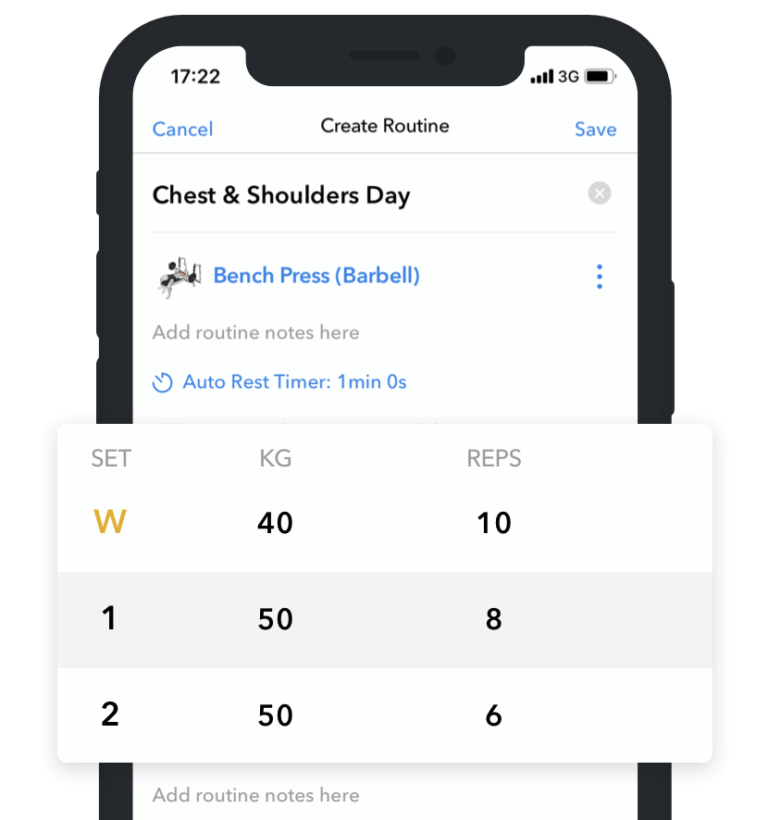
Hevy – Workout Tracker







Hevy – Workout Tracker
Create and log your pr workout with Hevy and track your progress
1. Fitness Level
Training experience is one factor to consider when determining exercise duration, as long workouts benefit more advanced athletes.
None of this means longer workouts are necessarily superior to shorter ones for everyone. It all boils down to the fact that doing longer sessions allows athletes to do more effective training to cause a stronger stimulus for progress (1).
For example, let’s take a gym-goer who has been strength training for five years. When they first started training, progress (muscle growth and strength gain) occurred linearly despite the relatively short sessions.
However, as the trainee gained years of training experience and progressed, the workout routine had to evolve and become more challenging. In other words, the gym-goer had to do more exercises and more working sets to see new improvements.
Put simply, a more advanced trainee will have to put in more work (longer workouts, more sessions per week, etc.) to keep making progress than a beginner or intermediate-level lifter.
2. Training Goals
Your training objectives will influence your workout style, which will determine how long your sessions should be.
Let’s take a powerlifter as an example. Their primary objective is to lift as much weight as possible on three key exercises: the squat, bench press, and deadlift. To achieve the objective, the trainee would have to lift heavier loads, often 80+ percent of one-rep max (1RM), for 3 to 6 reps per set (2, 3).


Optimizing training performance and doing enough quality reps requires more extended rest periods––up to five minutes between sets (4). As you can imagine, doing as few as ten working sets per workout could mean having rest for up to 45 minutes.
In contrast, someone interested in muscle endurance would do more high-rep sets, use shorter rest periods, and possibly even include intensity techniques (e.g., drop sets, super sets, giant sets, etc.) in each workout (5, 6).
Such a workout approach would allow the trainee to do more work in less time and progress toward their objective without spending as much time at the gym.
3. Schedule
Aside from looking at your training program, you must keep potential time constraints in mind.
Doing so isn’t ideal because you make compromises when developing your training program, but you can still make it work.
Let’s say you have a busy schedule and can only train for 30 minutes during your lunch break. In such a case, your job is to figure out how to create the most effective workout within your current limitations.
In other words, the question goes from “How long should a workout be?” to “How can I make the best out of my current situation?”
4. Stress
Working out is inherently stressful and causes significant disruptions. For instance, weight training stresses your muscles, joints, connective tissues, and central nervous system.
As a result, you become weaker and more likely to experience large-scale catabolism (tissue breakdown) after a demanding session (7). Through good recovery (time, proper nutrition, sleep, etc.), your body recovers from the training stress and adapts, causing you to see improvements.
Unfortunately, your body doesn’t have an infinite capacity to handle stress. The busier and more stressful your days are, the lighter and less challenging your training program needs to be.


Otherwise, you would be more likely to overtrain and experience symptoms like (8):
- Irritability and mood swings
- Suppressed testosterone production
- Poor appetite and digestive issues
- Inability to sleep well at night
- Declining gym performance
In other words, there is such a thing as too much exercise. You must determine workout intensity and duration based on your lifestyle to ensure the stimulus is large enough without driving you into the ground.
5. Nutrition
Your nutrition is another factor that influences your performance, recoverability, and training split.
Consuming more calories means your body has more energy to carry out its processes, move, and repair exercise-induced muscle damage. As a result, your work capacity is higher, allowing you to enjoy longer, more challenging, and more productive workouts that develop strength and muscle mass.
In contrast, caloric restriction, such as during weight loss phases, leaves less available energy for all of these things. Because of that, it is generally better to do shorter workouts and complete fewer working sets. Doing so would keep the training stress manageable and limit the risk of overtraining.
Practically, trainees can typically do more productive training during bulking phases (controlled overfeeding designed to promote muscle growth). But as someone reduces their intake to lose weight, their workout duration and frequency should also decrease to some degree.
6. Workout Pace
Workout intensity is somewhat tied to the Training Goals point we reviewed above, but some differences exist between the two.
How quickly you run through a session will influence its length because you can train hard or long but cannot do the two simultaneously.
In other words, slower workouts, where you take long rest periods and focus on slow rep execution, must be longer for you to do all the necessary work.
In contrast, fast-paced workouts, where you work on your aerobic fitness by doing exercises more quickly and taking shorter rest periods, should be shorter. You would be doing more work per unit of time, meaning you need less time to complete your training objective.
An example of the former would be a workout designed for building muscle. You should control your training tempo, do enough sets for multiple muscles, and take long enough rest periods to maintain good performance from start to finish. Covering these criteria will inevitably lead to a long workout.
Similarly, a strength training session will take longer due to the extended breaks between sets, multiple warm-up sets, and set-up for each exercise (e.g., loading weight plates on a barbell for deadlifts) (1, 4, 9).
In contrast, high-intensity interval training (HIIT workouts) is a fantastic example of fast-paced training. The objective is to push yourself close to your limits briefly, take a short break, and repeat.
For example, sprint for ten seconds, walk for a minute to recover and repeat. The workout can’t last more than 10 to 15 minutes simply because you’re pushing yourself to your limits. Anything longer would put you at risk of significant technique breakdown, injuries, and overtraining.
7. Weekly Routine
Your training frequency is another crucial factor in answering the question, “How long is a good workout?”
Training more frequently means enjoying short workouts and still doing the necessary work at the appropriate tempo to get closer to your goals.
Here are a couple of examples to consider:
Example 1: 3 Workouts Per Week (Full-Body Workouts)
Training three days per week means you must do longer workouts to create the necessary stimulus to build muscle and strength.
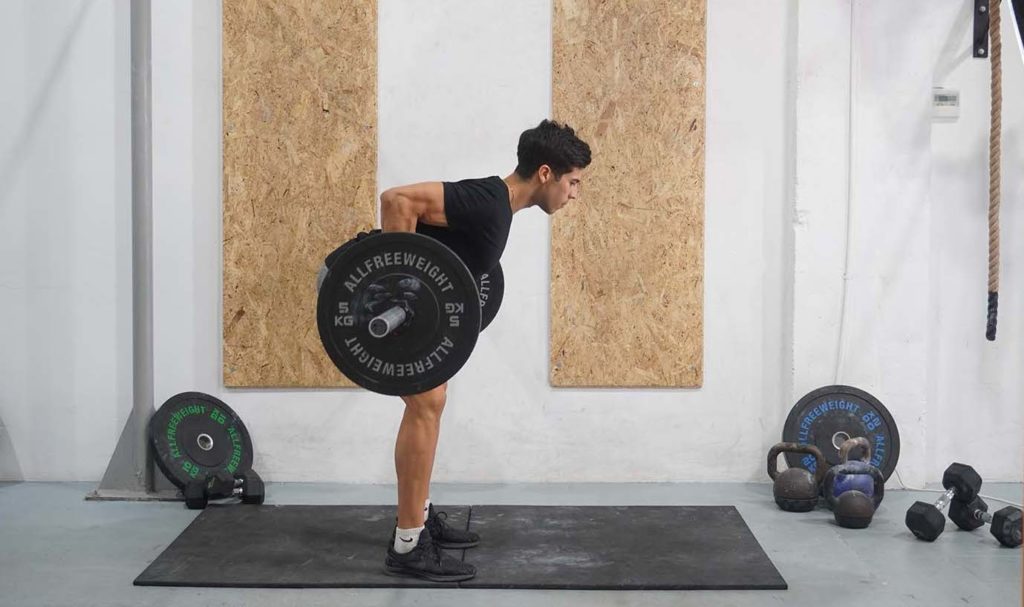

A typical workout might look like this:
| Exercise | Sets | Reps | Rest Period |
| Bent Over Barbell Row | 3-4 | 6 to 10 | 2-2.5 mins |
| Incline Dumbbell Press | 3-4 | 8 to 12 | 2 mins |
| Leg Press | 3 | 8 to 12 | 2 mins |
| Upright Row | 3 | 10 to 12 | 2 mins |
| Lying Hamstring Curls | 2-3 | 12 to 15 | 1.5-2 mins |
| Dumbbell Bicep Curl | 2-3 | 12 to 15 | 1.5 mins |
| Rope Cable Tricep Extension | 2-3 | 12 to 20 | 1.5 mins |
| Machine Calf Raise | 2-3 | 12 to 20 | 1-1.5 mins |
Completing that many sets and resting the appropriate amount in-between will inevitably take time. You could shorten the workout duration by recovering less between sets, which would affect your performance, leading to fewer completed reps and a higher risk of technique breakdown.







Hevy – Workout Tracker







Hevy – Workout Tracker
Create and log your pr workout with Hevy and track your progress
Example 2: 6 Workouts Per Week (Push/Pull/Legs)
Working out six days per week isn’t sustainable for many people, and we are certainly not saying you have to do it. The following is simply an example of how spreading out your weekly training volume would allow you to have shorter sessions.
Here is how a push workout might look if you train your shoulders, chest, and triceps twice a week.
| Exercise | Sets | Reps | Rest Period |
| Standing Barbell Shoulder Press | 3 | 6 to 10 | 2-3 mins |
| Incline Dumbbell Press | 3 | 8 to 12 | 2-2.5 mins |
| Straight Bar Skullcrushers | 3 | 10 to 12 | 1.5-2 mins |
| Lateral Dumbbell Raise | 2-3 | 12 to 15 | 1.5 mins |
| High Crossover Fly | 2-3 | 12 to 15 | 1.5 mins |
As you can see, the overall training volume is lower (15 working sets versus 26 in the full-body workout), which means you don’t have to spend as much time training.
You would train more frequently, but the average workout will be shorter, and you would still be able to do the necessary work to see progress.
Recommended Workout Length for Every Level
Beginner
Anyone with less than a year of serious, consistent, and structured resistance training behind their back is a newbie.
Beginners can gain muscle, build strength, and become more athletic without spending as much time in the gym.
The reason for the quicker progress is that a beginner is less accustomed to physical activity and the associated stress. Each workout provides a decent enough training stimulus, leading to improvements, even if the trainee doesn’t follow a good workout plan.
As such, newbies don’t have to do long workouts––as little as 25 to 40 minutes would be enough. In fact, doing shorter lifting sessions and cardio workouts could make it easier for a newbie to get into the habit of regular exercise.
Too many beginners fail and give up, not because they don’t want to make a change but because they make things unnecessarily burdensome. Instead of doing the bare minimum to see improvements, newbies follow unsustainable workout plans, only to end up overwhelmed and overtrained within a few weeks.
Unless you have at least two years of training experience, bet on quality over quantity. Focus on proper form, recover well between sets, and aim for steady performance improvements. Do less work for as long as it drives progress.
Intermediate
Classifying trainees based on experience can be tricky. Generally, intermediate-level trainees have at least a solid year of resistance training behind them.
To be classified as an intermediate, you should have been training consistently and seeing steady improvements: lifting heavier weights, mastering more challenging exercises (e.g., pull-ups), and generally being more capable than before.
Of course, there are some exceptions to the rule. Use your best judgment to determine if you are genuinely intermediate or still a beginner.
As an intermediate-level trainee, a typical strength training session should last roughly 50 to 60 minutes, or slightly more if you take longer to warm up and do more warm-up sets before compound lifts.
Your workouts might be longer or shorter depending on the following:
- The type of training you do (e.g., lifting weights vs. cardiovascular exercise)
- The intensity (e.g., slow-paced resistance training vs. HIIT sessions)
- Your training frequency (high frequency = shorter workouts; low frequency = longer workouts)
Advanced
There are several ways to determine if a trainee is intermediate or advanced. One way to tell is by looking at how much weight they can lift on the big three.
For instance:
- Squat – 2 times body weight
- Bench press – 1.5 times body weight
- Deadlift – 2 to 2.5 times body weight
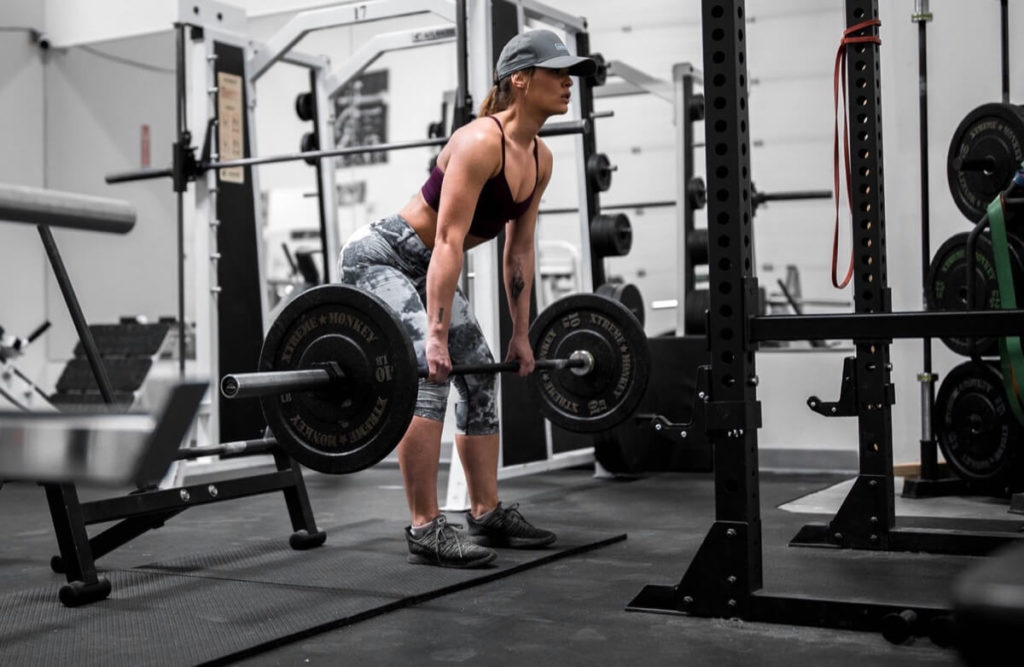

There are some limitations here. One such is that some people build strength more quickly than others, but how can we classify a lifter with two years of experience behind their back as advanced?
The second limitation is that not everyone does the big three and, therefore, might not be able to lift as much weight despite actually being advanced.
Solely looking at a person’s time in the gym is also not ideal. A lifter might have spent an entire decade at the gym, but they could be far from advanced for various reasons:
- Ineffective workout routine
- Not enough effort
- Not tracking progress
- Taking long and unjustified breaks from training
- Not getting enough sleep
- Not eating enough calories and protein to support growth (10, 11)
Another way to classify someone as advanced is to look at their training history in combination with their progress. Doing so is perhaps the most accurate way to tell if they are advanced.
An advanced trainee would be someone who has been lifting weights consistently for at least five years. In addition, the person should have made good progress (building muscle, getting stronger on compound exercises, mastering challenging bodyweight exercises, etc.).
If you fall into that category, your workouts will likely have to be at least 70 minutes long, especially if you’re primarily looking to build strength as opposed to developing your aerobic fitness (cardio).
As with the other categories, other factors play a role:
- How frequently you work out (three, four, five, or six days per week)
- How fast-paced your workouts are
- What goal you are currently working on (e.g., build muscle mass vs. lose weight)
- If you’re stressed out and not getting good sleep at night
The Bottom Line on Effective Workout Duration
As you can see, there is a lot to consider when determining how long a workout should last.
The first step is determining whether you’re a beginner, intermediate, or advanced.
Second, consider the workout durations we’ve shared for each category, and compare them to your current training session durations. The Hevy app tracks your workouts and shows you exactly how long each one lasts.
Beyond that, consider the following factors and how each might influence your strength training sessions, HIIT workouts, and such:
- What are your primary training goals?
- How frequently do you engage in structured physical activity each week?
- What’s your schedule like, and can you train for as long as you want?
- How is your stress outside the gym? Do you feel fresh and able to tackle a vigorous exercise routine, or is it too demanding?
- How is your nutrition? Are you in a calorie surplus and looking to build muscle, or are you dieting to lose weight?
Determining the ideal workout length is complex, and there isn’t a single answer that will work great for everyone.
Lastly, you should monitor how you feel and adjust your workout time. The following rules of thumb can help:
- Feeling great but not making good progress? Lengthen your workout duration slightly and do 10 to 20 percent more work by adding extra training sets.
- Feeling great and seeing improvements? Keep things the same.
- Feeling terrible and not seeing improvements? Scale back your training and take a deload week.
Conclusion
Completing your first full workout is immensely satisfying. You know that you’re doing something positive and proving to yourself that you can stand tall in the face of challenges.
However, as you gain experience, you begin to wonder about details and questions like “How long should you work out for?”
Unfortunately, no single answer works great for everyone, regardless of your training experience, goals, lifestyle, schedule, and other details.
It comes down to you to determine the ideal workout length that allows you to train hard and make steady progress without becoming overtrained.
Fortunately, there are guidelines and factors to consider when making training decisions. You must first consider your training experience, schedule, the stress outside the gym, and nutrition.
Beyond that, consider factors like:
- Training goals
- Workout pace
- Workout frequency
Once you have some goals and are working out consistently, monitor your recovery and performance to determine if you’re on the right track. Keep things as they are if you’re feeling good and making progress, or scale back your workouts if you feel overtrained.
Finally, while we’ve done our best to break it down for you, it’s best to consult a healthcare professional or fitness trainer before starting a new exercise routine.







Hevy – Workout Tracker







Hevy – Workout Tracker
Create and log your pr workout with Hevy and track your progress
Check out the Hevy app if you’re looking for a simple tool to organize your training plan, log workouts, and track your performance.
FAQs
1. Is a 30-minute workout enough?
A 30-minute workout can be enough for beginners because they can do a couple of compound exercises and still make progress.
However, more advanced trainees would have to employ intensity techniques (super sets, drop sets, etc.) or do a circuit/HIIT session to provide the necessary stimulus for growth.
2. Is one hour enough for a workout?
A one-hour workout is more than enough for most beginners and is typically ideal for intermediate-level trainees.
However, advanced trainees will have to do longer sessions to make optimal progress. If that isn’t possible because of schedule, training more frequently would allow advanced lifters to do enough work inside a training week to progress effectively.
3. Is it okay to work out every day?
Daily training is a somewhat controversial idea.
On the one hand, some people recommend working out every day to stay consistent and feel better. The more frequently you train, the more fitness becomes part of your life and identity. Plus, a good session can boost your mood and energy levels.
In addition, training more frequently allows you to do shorter sessions and still make progress toward your goals.
On the other hand, daily training might not be ideal because it means you must find time for physical activity every day, which can be burdensome.
Instead of working out every day, it may be better to train four to five times weekly. That way, you would exercise frequently enough to maintain momentum while also having to do shorter workouts.
4. How can I tell if I am overtraining?
Overtraining, also known as overtraining syndrome, occurs when an athlete doesn’t recover adequately from their training plan.
Some of the most common symptoms include (8):
- Declining athletic performance
- Loss of motivation to train
- Weaker grip
- Reduced explosiveness
- Excessive muscle soreness
- Digestive issues
- Loss of appetite
- Inability to sleep well at night
- Irritability and mood swings
- Brain fog and poor productivity
5. How long should a full-body workout be?
Determining the length of a full-body workout comes down to the following:
- Fitness level
- Training frequency
- Workout goals
- Pace
In most cases, 60 to 75 mins will be enough to complete a productive workout and train all major muscle groups.


